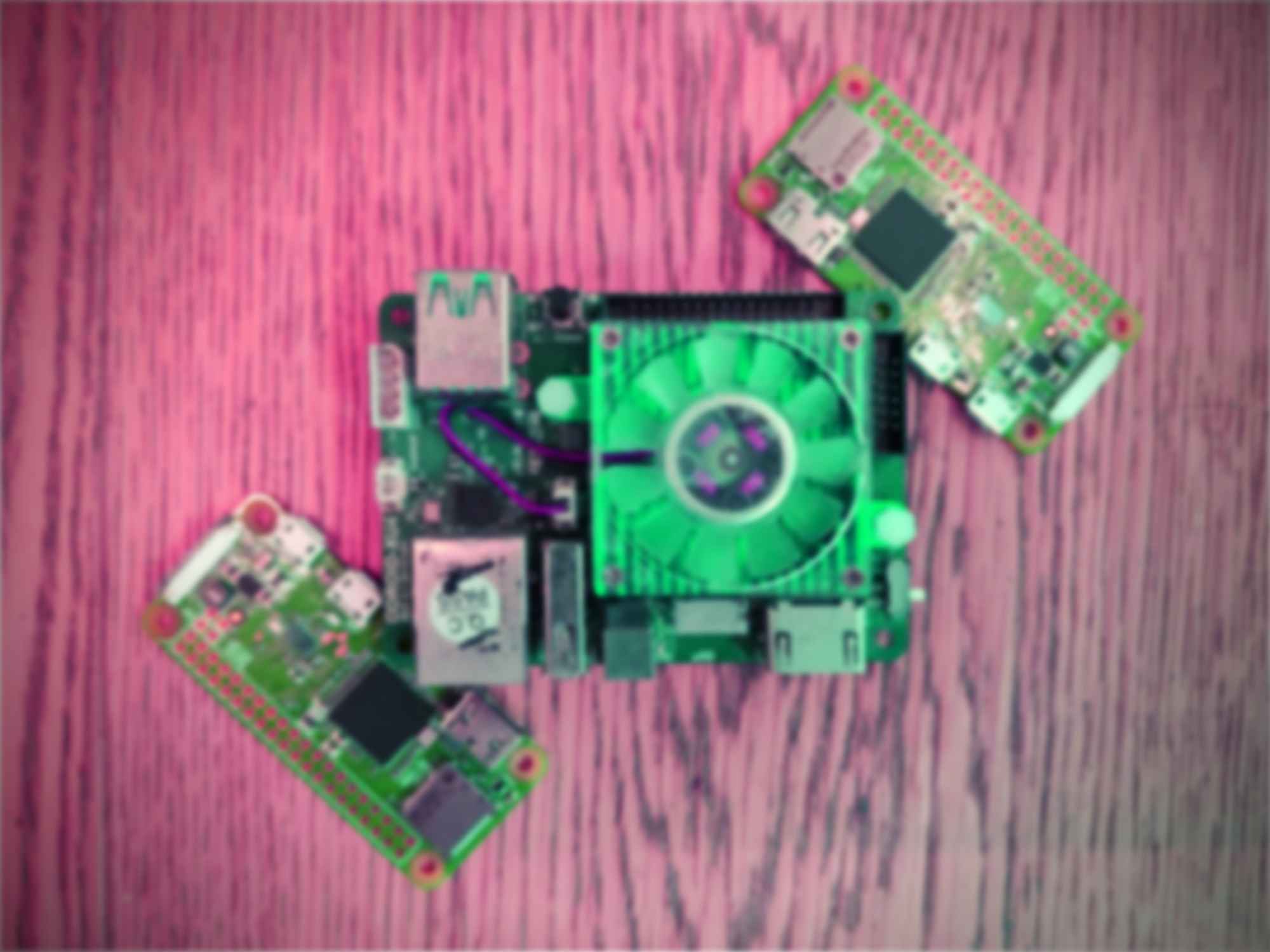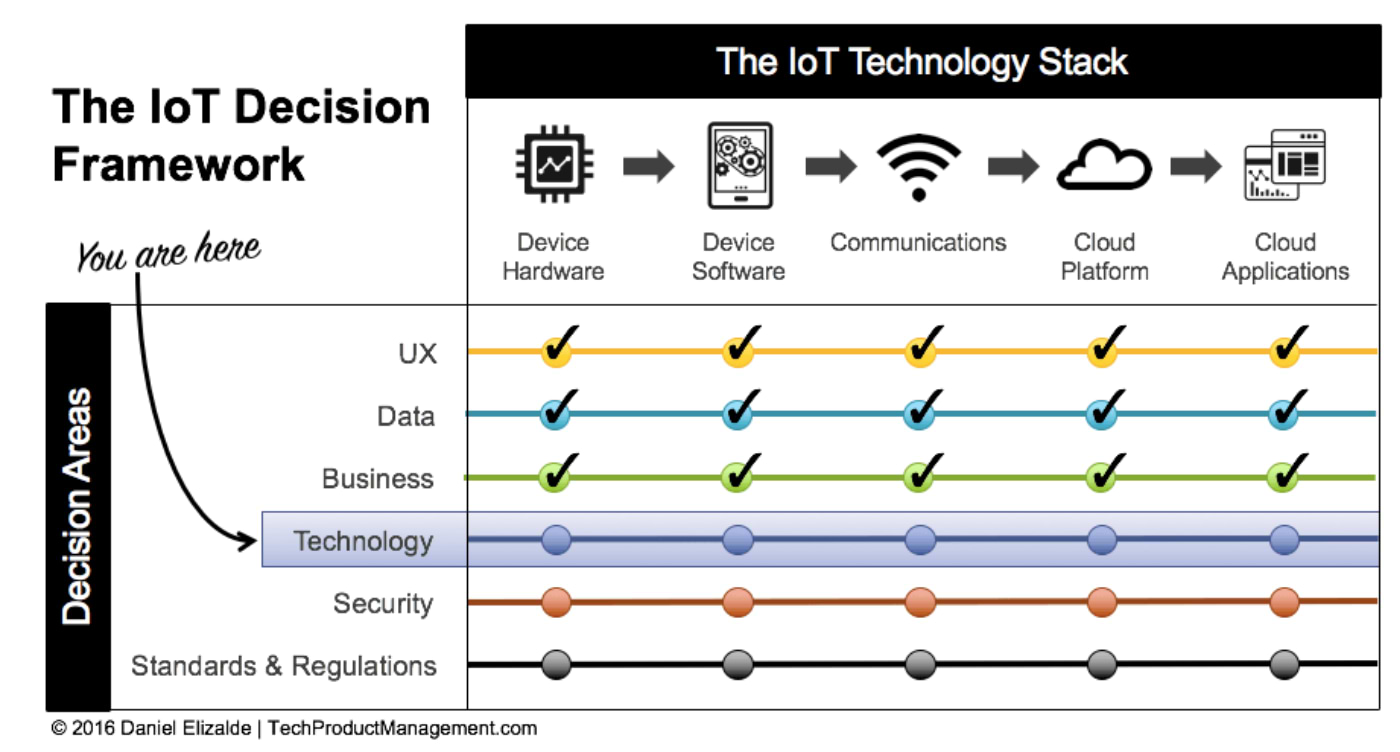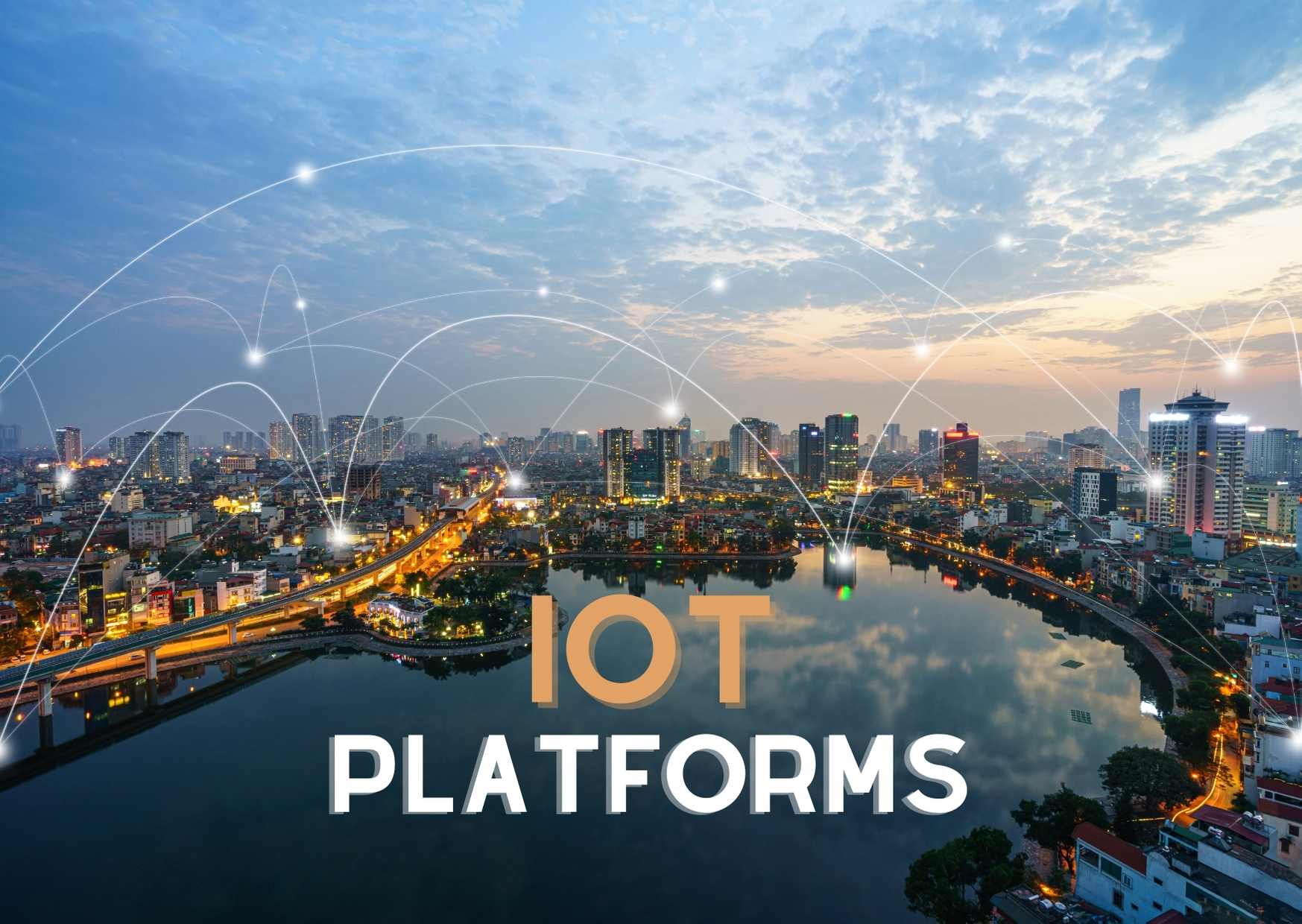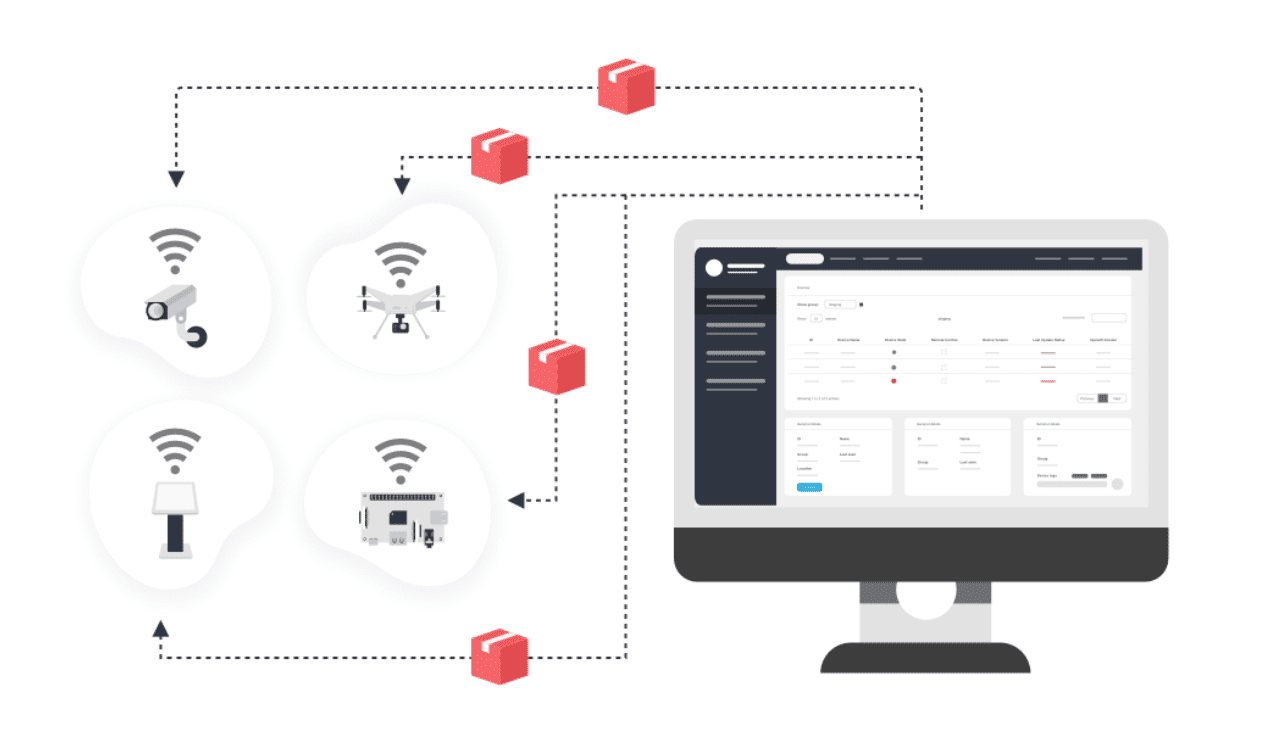What Is An IoT Platform?
This is where an IoT platform excels. It’s a multilayer technology. It provides simple provisioning, management, and automation for devices that are connected within your IoT universe.
It allows hardware to connect to the cloud through flexible connection options. Security mechanisms at enterprise-grade, and powerful data processing capabilities. From a developer’s perspective, an IoT platform gives pre-installed features that will speed up the creation of applications for devices that are connected along with managing scalability and cross-device compatibility.
With all of that said, it’s likely that an IoT platform can function under many different use-case scenarios depending on what you need. It can also be called middleware, particularly when talking about how it can connect remote devices to applications and/or other devices, and the way it manages interactions between hardware and application layers.
An IoT platform can also be called a cloud enablement platform. Sometimes called an IoT enablement platform too. It largely depends on the business value it provides to standard devices enabled with cloud-based applications and services. Under this last name, the focus makes it a key tool in any IoT developer’s toolkit.
Now that we understand what an IoT platform is, let’s look at different applications based on the business value it provides.
Middleware – IoT Platform Option
Originally, IoT platforms started out as IoT middleware. The main purpose of this platform was to operate as the middle piece between hardware and application layers. As a middleware IoT platform, its main tasks were data collection using different network topologies and protocols, the configuration of remote device controls, management of devices, and all firmware updates delivered over the air.
Using IoT middleware in real-life IoT ecosystems that are dissimilar, the expectation is that the IoT middleware will support integration to 90% of connected devices and connect with any third-party applications installed on the devices. By being independent of the underlying hardware and overhanging software, a single IoT platform can manage any type of device that’s connected in an easy and straightforward way.

While middleware IoT platforms can function, newer modern IoT platforms provide an array of features into the hardware and app layers also. Most provide frontend components and analytics, data process on-device, as well as deployment to/from the cloud. Some modern IoT platforms can even handle end-to-end IoT implementation from the start to finish.
Technology Stack for IoT Platforms
When considering an IoT stack, there are four usual layers. These are connectivity, things, core features, and applications, and analytics. A high-performing IoT platform needs to offer many of these IoT functions to allow easy development of your connected devices and smart things.
As shown in the image above, devices connect to the IoT platform, which will often reside in the cloud or your on-premises data center, either via an IoT gateway or directly. A gateway becomes a good option when your endpoints aren’t able to connect directly with cloud communication. Or maybe you require on edge computing power.
With an IoT platform, it can be broken down into many layers. Starting at the bottom would be the infrastructure level. This enables the main platform functions. You’re likely to find components here like container management, messaging for internal platforms, organization of IoT solution clusters, and more.
The next layer is communication. It controls the messaging for all devices. This simply means that this layer is where devices will connect to the cloud so they can perform distinct operations as needed.
The next layer is the IoT core features offered by the platform. The most essential are data collection, management of devices, configuration management, device messaging, and OTA updates.
On top of the IoT core features layer, you’ll find a layer that relates to the exchange of data between devices. It’s also where the data is processed in the platform. You’ll find reporting and the ability to create custom reports. Visualization capabilities so data representation in user applications is easily understood. There is also analytics, rule engines, alerts to report and notify you of any discrepancies detected within the IoT platform.
When looking for a great IoT platform, you’ll want those that allow you to add your own specific components and third-party software. An IoT platform without this customization functionality could cost you time and money and delay deployment indefinitely.
IoT Platform Differences
When deciding on the best IoT platform solution for your business, there are important criteria to consider for each platform. Considerations need to be reviewed around scalability, customization, how easy it is to use, code control, third-party software integration options, ease of deployment, and data security levels.
The right IoT platform should provide the following:
- Elastic Scalability – the best IoT platforms provide scalable (cloud-native) options across any endpoints that clients require. This type of function is often taken as a given for public cloud deployments but to ensure it is available, it needs to be tested in case it’s to be used as an on-premises deployment. Things to look for from a performance perspective include load balancing functionality for maximum server cluster performance.
- Fully Customizable – probably one of the most important factors for delivery speed is having an IoT platform that is customizable and flexible with API integrations, loose coupling of components on the platform along with source code transparency. If small-scale, an undemanding IoT solution that has good APIs is often enough. A feature-rich, fast-moving IoT ecosystem will generally need developers to have the ability to achieve more control over the whole system, source codes, integrations, options for deployment, data schemas, security and connectivity mechanisms, etc, etc.
- Data Security – the best IoT platforms will have encryption capabilities, detailed identity management along with flexible deployment options. To avoid potential breach compromises within your IoT solution, end-to-end data flow encryption is needed. This should include resting data, authentication of devices, management of user access rights, and private cloud infrastructure for any of your sensitive data.
With all of this in mind, there are two potential options for IoT solution cluster deployment provided by most IoT platforms: either a self-hosted private IoT cloud or a public IoT PaaS solution.
IoT Platform-as-a-Service
When deciding between the two options, it’s important to understand what each offers. Often referred to as an IoT cloud solution, the IoT PaaS (platform-as-a-service) solution provides the user with the ability to lease cloud infrastructure and the IoT platform from one single provider. In some instances, they might also offer ready-to-use IoT cloud services, which are built and hosted by the provider and hosted within its infrastructure.
Private IoT Cloud
While the previous option is a good solution for a lot of businesses, there are instances where an IoT platform has private IoT cloud-enabled. Compared with the public PaaS solution, which uses the provider’s cloud, the private IoT cloud is able to be hosted on any cloud infrastructure, private data centers included. Using this type of setup provides better control over the development of new features, specific customizations, and integration with third-party applications. It’s also the best option if you need heightened data security and the best performance.
Before choosing your IoT platform, let’s look at how it fits in with your overall business and product strategy.
IoT Product Strategy
Before you start developing products and choosing your IoT platform, it’s important that you have your IoT product strategy mapped out.
You need a robust strategy that covers these three core areas:
- Does your market want the product you’re looking to create?
- Is there already an existing business model where you can make money with your product?
- Are you able to build your product?
While IoT platforms will help with the feasibility aspect by allowing you to fast-track and reduce risk in the development process, this should only be approached once you’ve answered the first two questions.
It’s likely that you already know you can build your product, but without ensuring that your product solves a real problem your customer has and that you’ll be able to reap the financial rewards you’re looking for, creating the product is pointless.
Once you’ve got that clarity and you’re ready to choose your IoT platform, there is a way to make this process easier using what Daniel Elizalde calls the IoT Decision Framework.

Before you get to the technology decision process though, make sure you’ve already ticked off the other areas to assess desirability and business and data decision areas for viability.
Once you’ve got those areas covered off, let’s dive deeper into how an IoT platform could fit into your business.
Utilizing an IoT Platform in Your Business
There are many case uses for IoT platforms. They play important roles for smart device developers and startups, as they can use an IoT platform to enable their products to have remote access and real-time reporting functionality, customizable alerts, and notifications, along with cloud service capabilities and easy integration with end-user smartphones and devices.
An IoT platform isn’t just for smart device developers though. Other industries that benefit from the application of an IoT platform include agriculture, the industrial, and transportation sectors, particularly when looking for cost optimization solutions. They can access remote monitoring of their vehicles and in-field devices, have equipment maintenance notifications automated, collection of sensor data from real-time product analysis as well as safety procedures deployed and cargo delivery tracking to name a few.
Companies such as CSPs, smart city, and smart energy integrators will typically utilize a large-scale IoT cloud solution. With an IoT platform, these companies can develop customizable IoT infrastructures that deliver different services for customers, companies focused on public services, as well as large corporations. Some you might be familiar with include car services, air quality monitoring in large cities, smart building deployment, plus so many others.
Companies in the healthcare, hospitable, retail, and travel areas utilize IoT platforms to provide and improve customer service experiences. Using an IoT platform allows these companies to provide personalized services and reduce stress levels in interactions between customers and the company.
A good example of this is the use of patient monitoring remotely. This is a convenient solution and saves patients time on having to visit the hospital all the time. With IoT, patient data collection becomes easy and streamlined. This is just one example of how these industries might use IoT platforms.

Connecting The Dots
It’s a given that IoT solutions are going to become more complex and dynamic as the industry evolves. They can connect large ecosystems of devices and can develop faster than a standard enterprise application software solution.
With remote interactions between devices and humans increasing as each month passes, you’ll see IoT solutions developing more customer-oriented digital experiences. And while the complexity of these options can feel intimidating, utilizing the IoT is doable without the usual effort required or having to reinvent the wheel.
So where does that leave a company looking to manage their IoT devices?
JFrog Connect
JFrog Connect is an agile solution for connected edge devices making remote product maintenance even easier. We allow companies to manage their remote Linux and IoT devices in one place, from any location.
“Manage connected products in groups with name, description, and tag. Arranged by real-time device state, software version, technical details, logs, location, and high-end tools to control and monitor your fleet.”
Remote Linux IoT Device Management Platform
At JFrog Connect, we specialize in providing IoT platforms to assist in the management of your Linux device management. These embedded devices used to run on C[language] based firmware (some still do) or a form of RTOS (real-time operating systems).
Over the past few years, the tides have turned and the industry as a whole is moving towards implementing a Linux Operating System, which provides more flexibility in controlling your IoT devices.
“This has spread into not only home automation systems but also drones, robots, and even industrial automation systems.”
Needing to remotely manage Linux IoT devices
When you have IoT devices that are Linux-based (or any operating system), the need to connect to them via other means so that we can manage, monitor, update, and control them becomes a necessity.
What would that look like if a digital marketing agency wanted to deploy a large banner screen to a location miles away from their main headquarters, along with ad content such as slideshows and videos?
In most instances, this type of large display is often controlled by some form of embedded board computer that runs on Linux or Windows. The issue will be when the time comes to update the content in hundreds or thousands of deployments. Of course, these can be updated manually by someone visiting each one, but that’s time-consuming and not cost-effective.
This is where IoT device deployments can be managed remotely via four key tasks, as long as they are available within the deployment.
- OTA updates. Over-the-air updates maintain the latest software and bug fixes for edge devices. This reduces vulnerabilities through regular updates and increases performance.
- Remote control and access. Access to devices remotely at any time without connection issues allows troubleshooting faults very easy.
- Remote monitoring. Making sure that each device and deployment is running, without issue means remote monitoring allows you to check on internal hardware parameters, sensor readings, and data samples as needed.
- Security. All of the previous points are irrelevant if you can’t perform them in a safe and secure environment. A good IoT device management platform ensures that security levels are maintained at all times, including rollback protocols should any
ssues arise during an update.
This is why JFrog Connect exists.
We understand how hard it can be to get the tasks you need to be completed when a Linux device is located out of physical reach. Remote access is needed in these instances.
And while you might have tried more conventional methods such as connecting to a Raspberry Pi via Teamviewer, or accessing your Linux computer through VNC, these are not always available solutions, particularly when you’re talking about thousands of devices.
“So we invented JFrog Connect, a lightweight, agent-based platform where you can manage all your Linux edge devices with just one click.”

IoT device management is typically made easier with dedicated services that offer specific, purpose-built tools to ease up the three stages of IoT device management.
- Onboarding and Configuration
- Daily Management and Maintenance
- Diagnostics and Remote Status Alerts
If managing your Linux devices is causing you sleepless nights, maybe it’s time you considered an IoT platform to handle your IoT device management.
Ready to experience the power of JFrog Connect? Join today for your free trial and start exploring.
For more information and feature guides, make sure to visit our blog and stay up-to-date on our latest articles and how-tos guides.



